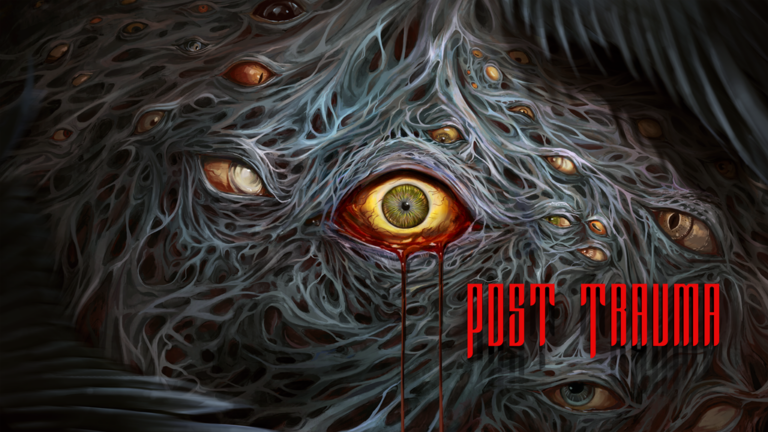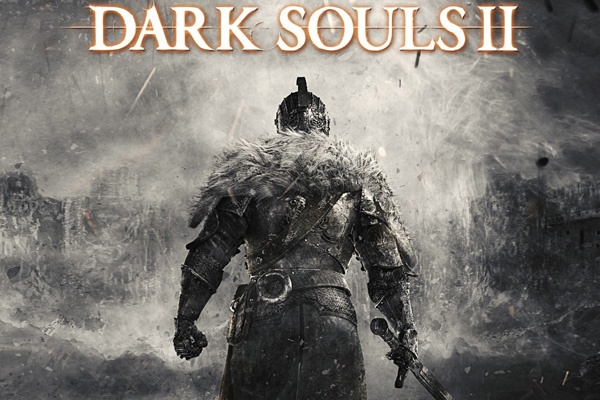
Ah, death, how I missed you! Dark Souls II is the third entry in the infamously challenging and satisfying Souls series, and it carries on the legacy in a beautiful way that I didn’t see coming. A Western-style RPG created by Japanese developer FROM SOFTWARE and published by Bandai Namco, this game is a hack ‘n slash RPG with a focus on deadly and un-matched combat, exploration, and discovering the secrets hidden within its world.
Taking place in a kingdom named Drangleic, you play The Chosen Undead. In the world of Dark Souls II, much like the previous game, an Undead is a human cursed to never die, being reborn each time. But with each death they lose a bit more of their humanity until it’s all gone, turning the Undead into a Hollow, a lifeless, mad husk of its former self. As an Undead, you are drawn to Drangleic by your nature to seek and consume souls, the one essence in life which will keep you human and sane, and make you all-powerful.
Many people were worried that DSII would be toned down for a broader audience, but that is simply not the case. FROM SOFTWARE has made the opening of the game a bit more clear with less options leading to immediate death and frustration, but the developers’ kindness ends soon after discovering your hub for the game, the sparse town of Majula. It is here you are greeted by the Emerald Herald, the maiden who watches over the main bonfire and levels you up, much like the Maiden in Black from Demon’s Souls. She explains that you must slay the four great ones and collect their souls to find King Vendrick, ruler of this land, and discover why it has been blanketed in darkness, demons, and death.
Character creation in DSII I found to be a tad disappointing. It felt like there were less options for skin color and hair styles, but for those who want a unique character, you can edit the small bits of their faces, down to the size of the nose bridge and the slant of their lips. You pick a starting class, including but not limited to Knights, Clerics, and Deprived, each with their own starting gear and determined stats. But take note that the only thing your class determines is how your character starts; you can become any type of warrior you wish, be it an agile short-sword user, a claymore wielding brute, or a spell casting mage. Even archers and dual swordsmen are much more viable classes this time around. If you’re unhappy with your character choice after a few hours, like I was, there are multiple items in the game called Soul Vessels, which you can use with a certain someone to re-spec all of your points.
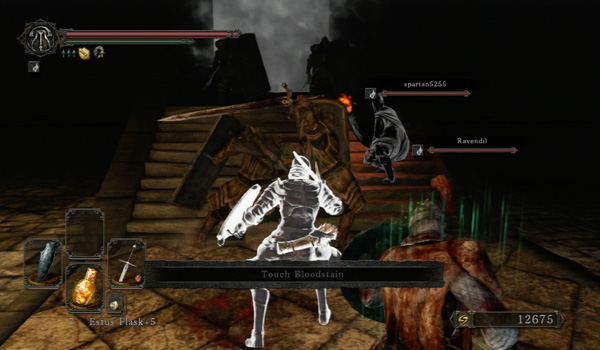
Combat feels exactly the same as the previous entry, which is good, but it has been slightly adjusted. You now have three weapons slots for each hand, allowing you to assign shields, swords, staffs, bows, or what have you to either. By tapping the d-pad you can switch between weapons on the fly, as well as spells attuned to your character and items assigned to your quick slots. R1 performs your standard attacks while R2 executes a heavy one. Each attack drains your stamina, as well as dodge rolling, running, jumping, and successfully blocking. L1 blocks and L2 typically parries, throwing your opponents attack wide and opening up their defenses. Some shields perform attacks or other functions with L2, however, so its a good idea to learn your equipment before you go out into the field. Tapping Triangle two-hands your right hand weapon, weakening your block and stamina consumption, but increasing your attack power. You can now hold down Triangle to two-hand your left hand weapon as well, opening a new arsenal of attacks. It is absolutely key that you learn your characters stamina limit and balance your strikes and dodges so that you’re never left open to damage.
Killing enemies will yield souls, and the bigger they are, the more difficult it is to make them fall, but your soul reward will be higher. Souls are the central focus of this game. You take them back to the Emerald Herald and spend them so she can level you up. Leveling in DSII can be tricky, but thankfully by pressing the SELECT button in menu, you can hover over all the symbols on screen and the game will explain exactly what each represents. It’s important to know that your equipment load determines your movement speed and that poise helps you stay balanced while being attacked. Know your stats and weapon damage bonuses as you proceed. In addition to leveling up, you also spend souls as currency on the many NPC’s throughout the game. You’ll need to buy armor, new weapons, items for healing and combat aides, as well as just give some to greedy NPC’s that help you advance in certain areas.
Bosses are something that DSII toys around a bit with this time. The previous game typically had huge bosses that were treated as super-powerful enemies in arena type settings. That’s still true for most, but the variety here is plentiful and welcoming. You’ll come across bosses that consist of multiple beings, some that each have their own health bars and even a boss that pursues you through the level. There are many optional boss encounters that yield interesting and excellent rewards, even if you don’t readily know what to do with what you’re given. Each boss also has their own theme song, all of which excel in either scaring the bajeebus out of you or pumping you up to take them on. For fans of Demon’s Souls and Dark Souls, you will be pleased.
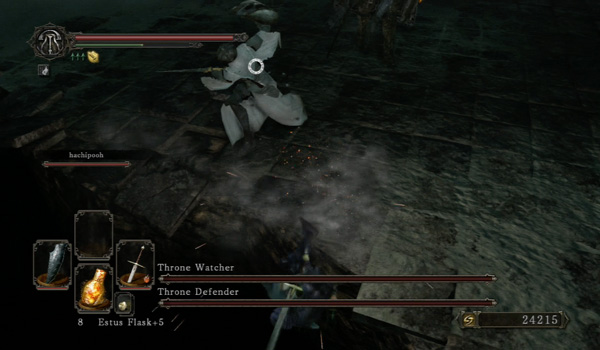
It is inevitable at some point that you will die in this game. So far, the game has killed over eighty five million Undead at the time of writing this review. Death comes in many forms; enemy ambushes, one-hit kills, hidden pits of complete blackness, you name it. How can you avoid death? Well, you recover health in DS2 through the use of multiple items, but the two main ones you’ll be using are the Estus Flasks and Life Gems. The Emerald Herald gives you your first Estus Flask, and you only start with one. Just one! By finding Estus Shards, you can bring them back to her and she will increase your usable number. You’ll come across Sublime Bone Dust, which must be burned in the bonfire at Majula to increase how much health each one recovers. As before, you restore your Estus Flask uses by resting at any bonfire. As for the Life Gems, they are disposable items you’ll find which restore health over a small period of time.
Bonfires are checkpoints which restore your health but also respawn each of the enemies in the level. Bosses do not come back, as well as a few rare and tough enemies. Upon killing smaller enemies too many times, they eventually stop spawning, which is a small complaint. But on the flip side, that forces you to farm souls from higher enemies as you advance.
Upon death, you will lose your human form, your skin growing gray and green, like a zombie, and you’ll lose ten percent of your over-all health. Each death further degrades your physical appearance beneath your armor and ten percent more health until you’re at fifty. You can revert your inhumanity by using Human Effigy, rare items which can be found or purchased. It’s very important that you stay human in the game; you’ll have the most available health and can only summon help (or enemy players), which I’ll explain more on shortly.
Exploration is key, and this game has put a new focus on darkness, figuratively as well as literally. A new item to your arsenal is the trusty torch. Able to light one at every bonfire, you’ll find smaller torches which stay permanently lit so you can see more of the areas around you. Be careful of your surroundings at all times! Pits of death, living treasure chests, and poison spitting statues are just a few of the obstacles waiting for you. Many, many times you’ll want to throw the controller in rage of the life wrongfully taken from you, but remember, the entire game is a learning experience. That nasty level or over-powered boss becomes nothing but an obstacle to cross once you discover their ins and outs, their weaknesses. Scouring the war-torn and bloody messes of levels in this game gave me a wondrous sense of world connectivity. Finding all that was there to be found was thrilling, especially after over-coming a tough challenge or enemy guarding my treasure.
Speaking of areas, those available for you to explore are absolutely thrilling. At first, I was put off a little by the blandness of a few locations, harkening back to the days of Demon’s Souls. When I discovered the game’s lighting had been fixed, I was beginning to think I may not enjoy this game that much, but in the end I was wrong. After the first few levels, you’ll find places that are just rejuvenating to fight in and explore. One was so goose-bumpish, I felt that I was a Belmont in Castle Dracula! It was that atmospheric and nightmarish! The stormy nights, gorgeous ocean views, and barren, poisonous wastelands of a world filled with death rarely seem so rich and inviting in a game, and this entry in the Souls series definitely manages to pull it off, especially in the final areas of the game, which are the best, in my opinion. Also to note, you can warp between the bonfires in each level from the get go, eliminating back-tracking and time wasting.
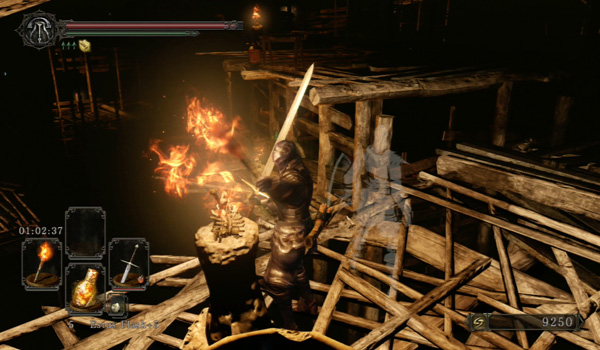
If the going gets too tough, there’s no need to fret, you don’t have to do it on your own! With the help of phantoms, you can summon two other players to your world to assist you through a level and its boss with the use of their summon signs. After finding the White Sign Soapstone in the first level, you can place a summon sign. Other players can see your sign and summon you to help them, and vice versa. Changes to the system are that each phantom is on a timer, so you’ll have to move fast to make full use of your ally. Typically when I came to a new area, I would place my summon sign down to go through the level as a white phantom. White phantoms lose no humanity or souls when they die, but gain souls with each enemy killed and can even pick up items in other players worlds. White phantoms can now use their Estus Flasks, wheres they couldn’t in Dark Souls.
On the flip side of things, Dark Souls II has the best player-versus-player set up in the series. By using a Red Sign Soapstone, players can summon red phantoms into their world to duel one on one. Or, if the summoning player is dirty, they can summon two allies and then summon a red phantom, if the appropriate signs are available. For those less honorable murderers out there, players can use another item to forcefully invade another player’s world and steal their souls. Due to DSII’s dedicated servers, you will never be wrongfully back-stabbed (a horrible problem in Demon’s Souls and Dark Souls)! Another noted change is that you can be invaded whether you are human or dead, so it really is ideal to stay human now!
A multitude of covenants provide themselves to you, if you can find them, in the land of Drangleic. The Blue Apostles/Sentinels give you a ring which automatically summons you to the aid of others within your covenant, The Bellkeepers pull you into the Belfy Sol Arenas to kill players attempting to ring their bells, The Covenant of Blood encourages PVP and forceful invading, etc. Whether a newbie to the Souls series or a professional, there is bound to be a covenant to fit your needs and desires. Each one has their own rewards, but there is no punishment for abandoning one. However, there may be punishments by just doing what they ask of you, which is typically fighting stuff out of your league!
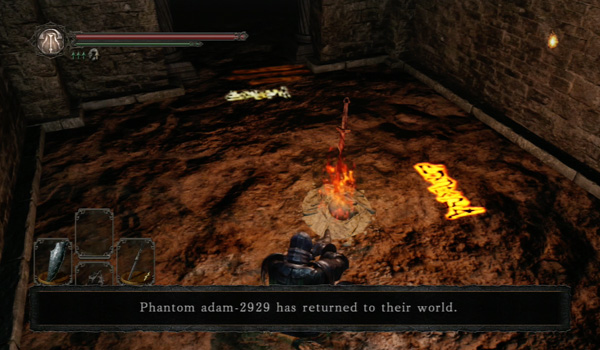
Being a Souls title, you can bet that most tidbits of story gathered from item descriptions, NPC conversation, and background scenery are vague. All you really know is that you are an Undead who must slay the Four Great Ones and become worthy enough to find King Vendrick. Why must you find him? Where is he? What has he done? Your questions may be answered, if you can find them.
Dark Souls II is a game that does not hand you much, and isn’t afraid to punish foolish behavior. Each new enemy, room, and boss should be approached with extreme caution, for blind rushing is severely punished with absolute death. It doesn’t treat its players like mindless gamers, which is one of my favorite aspects of the series. Levels branch between one another, circling you around and causing confusion. At some points, players will scratch their head wondering where they must go, unbeknownst to them that the NPC who sold spells they couldn’t use would move locations and open a door later. I myself had actually found the final boss grounds and didn’t know it because I hadn’t completed the proper quests to initiate it. If you find yourself stuck, I strongly urge you to explore, talk to NPC’s, and see if friendly phantoms can help. Dark Souls II is vague and cruel, but not completely unfair or unrewarding.
Initially, my time in Drangleic made me long to go back to the deathly valleys, caverns, and lost cities of Lordran. But by the end of my time in the dying kingdom, I now prefer to roam Drangliec further, discovering all of the secrets and optional bosses I had missed or couldn’t pass at the time, further extending my current fifty plus hour play time. This game will test the very limits of your strength, patience, and cunning, but for those with the burning flame to endure its hardships, many secrets, rewards, and some of the best experiences in a video game lie in wait for you.
 (9 / 10)
(9 / 10)
Amazing
 (9 / 10)
(9 / 10)
